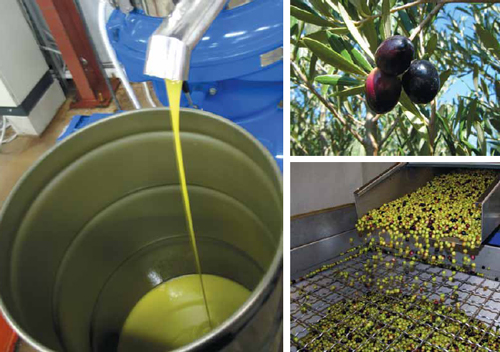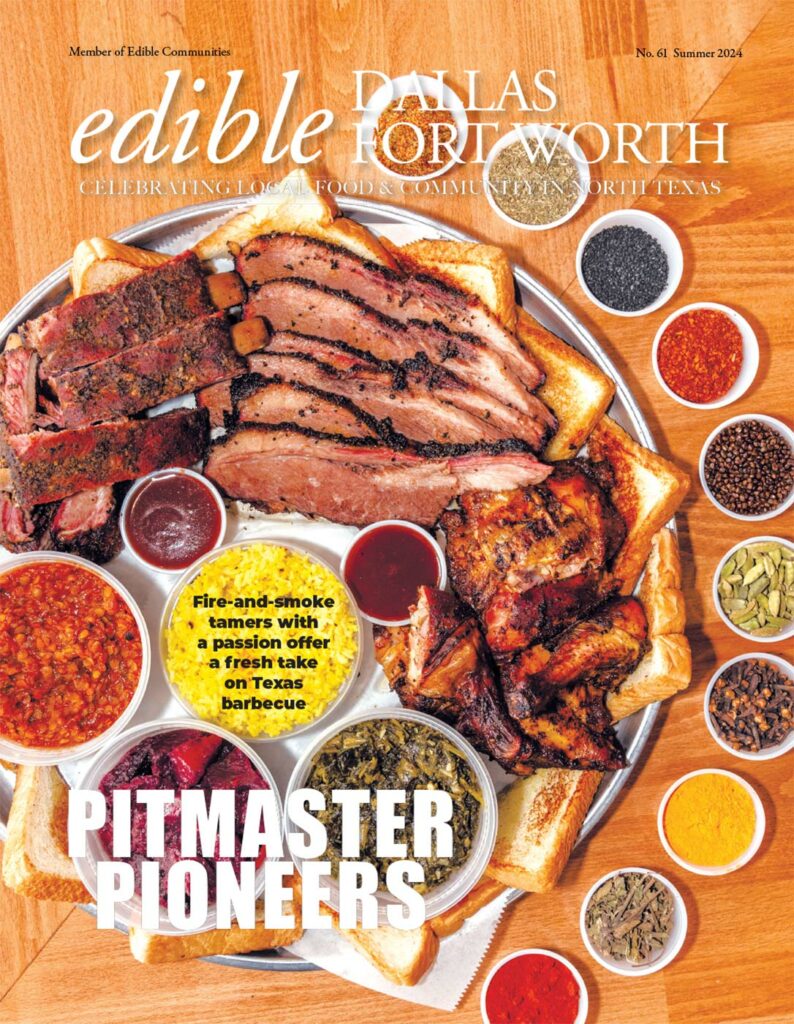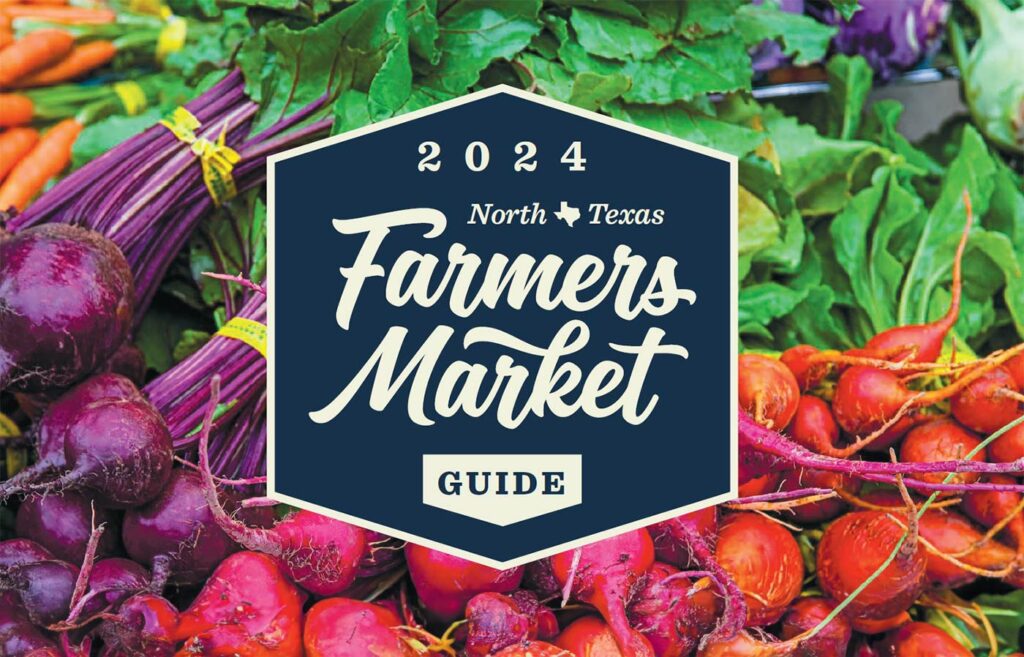
“Olive Oil? From Texas? It can’t be good!” Even locavores who pride themselves on sourcing and eating locally produced food can get downright snobby when it comes to olive oil. Surely it can’t be as good as oil from Tuscany, Spain, or even Napa! But, the fact is, our Texas olive oil is good, just made from different olives and grown in a different climate and soil than its Euro-cousins. It’s good in the same way that Cabernet Sauvignon or Merlot or Sangiovese wine is good. It’s all in the growing and production. It’s good for different uses, in different settings, and for different celebrations. To view it otherwise is to see it as a commodity, denying it the nuance, the variation and the terroir that gourmets relish in the fruit of the vine.
A New Type of Oil Baron
If there’s a Johnny Appleseed of Texas olive farming, it’s got to be Jim Henry of Texas Olive Ranch. This Dallasite has been sowing olive culture and growing olives in Texas since the mid-1990’s. With a stubborn streak, a passion for olive farming, and a vision that the Texas climate can provide all the essentials for a successful harvest, he’s not only growing his own business, but also encouraging others. In addition to producing olive oil, he sells olive trees, offers plenty of advice, and most generously, use of his onsite olive press. He has pioneered the production of Texas olive oil in commercially viable quantities. His first big harvest in 2007 yielded 100 tons of olives, equaling roughly 25,000 one-half liter bottles of Texas Olive Ranch extra virgin liquid gold.
Initially, Henry tried growing olives in the picturesque Texas Hill Country, but cold winters there killed the olive grove and put an end to his Hill Country orchard. Undeterred, he moved his operation down to the big open sky country in southwest Texas near Carrizo Springs, halfway between San Antonio and Laredo. There’s nary a rolling hill or cypress tree in sight, but his 40,000 trees thrive with a little help from irrigation. He’s changed the variety of olives from Italian to Spanish Arbequina, a relatively small olive with a high oil content (about 24% of its weight is oil) that loves this Texas climate. He also grows two other varieties, Greek Koroneiki and Spanish Arbosana, because they are pollinators of the orchard.
Taking in the Olive Harvest
Henry offers a hearty “You bet!” in response to requests to visit his orchard, especially during the harvest. I’d picked an olive or two in Tuscany and was interested to see how it all came down here in Texas, so my husband Gary and I headed down for last fall’s harvest. We were first struck by the contrasts, bearing in mind that we have made many visits to Italian olive harvests. The Tuscan harvest takes place in misty autumn, with silvered olive trees laced unevenly up and down the terraced hillsides. In Texas, olives fall from trees stitched in flat, even green rows on whitish soil under the big blue September sky. Lively Spanish replaces lilting Italian as workers banter playfully to pass the time; their work is punctuated by Mexican Mariachi rather than church bells sounding the hours in a valley below. But at the end of the day, the similarities outweigh the differences. The kaleidoscope of olives picked, ranging in color from green to maroon to purple-black, is the same. The excitement and worry over this year’s pressing is the same for farmers around the world just as is the experience of tasting the just-pressed, cloudy, chlorophyll-laden oil drizzled on freshly toasted bread with a good flick of sea salt. The joy of the harvest is simply unbeatable whether you’re in Texas or Tuscany.
In Italy nearly every community owns an olive press, but there is no such infrastructure for pressing olives in Texas, so Jim Henry provides it along with the press. A shiny new Italian Alfa Laval olive press sits inside an open metal barn with room for another one alongside it to handle future growth. Unlike ancient olive presses that used pressure and gravity to extract oil from the olive, newer technology uses computer-driven machinery with a sideways corkscrew to grind the olives (skins, pits, and all) into a paste that is then centrifuged twice; once to separate the solids from the liquid, and a second time to separate the vegetal water from the oil.
Extra-Virgin Olive Oil by European Standards is not the same as US standards.
The US lags in its olive oil classification systems, in fact not updating them since 1948, so the term Extra Virgin has no real meaning here. Standards by which Europeans process their oil stipulate that it must pass two tests to classify it as Extra Virgin. This is why we see many lesser quality oils being exported to the US and labeled as Extra Virgin and why olive centric organizations are sprouting up all across the US, to promote the proper production, processing and labeling of our olive products. There is currently no accurate way to compare European products with our own, and this lack of education is what is hampering local producers and confusing consumers.
These organizations are sprouting in several states across the US and their goal is to educate producers and consumers alike in the culture, pleasure and benefits of olive oil. So far Connecticut and California have passed state labeling laws that effectively mirror those of the International Oil Council. In our own state of Texas, The Texas Olive Oil Council actively promotes olive farming, awareness and quality standards. Although they have not yet established standards for the Texas olive oil industry, Richard De Los Santos from the Texas Department of Agriculture believes that the industry would benefit from such standards and is working with the Texas Olive Council to recommend them. Additional support is being provided through statewide marketing in conjunction with the “Go Texan” program. Texas Olive Ranch’s Jim Henry believes that labeling the product with the variety of olives used would add transparency and accountability to the industry. Like a good wine, knowing the varietals adds to the pleasure and taste of the product.
Economically, Texas producers face an uneven playing field. High quality, locally produced olive oil must compete on the grocery shelf against low-cost imported oils with romantic labels from faraway places and the meaningless Extra Virgin moniker. The challenge for local olive oil producers remains in education of the public. Know what you are getting when you purchase that bottle of olive oil from the store and similarly know what your product contains when you purchase it from a local grower and producer.
Enter the Education – A Question of Taste
For many Texans who may have been introduced to olive oil at a cafeteria condiment counter, the olive oil taste bar is initially set very low. In fact, according to a University of California–Davis study, one of the predominant tastes that American consumers like in olive oil is, “flavorless or rancid”. In other words, a typical consumer might expect or prefer milder flavored oil because they are familiar with that which is older or has been improperly stored. Unfortunately, unlike wine, olive oil does not improve with age. Like wine, sun and high temperatures adversely affect it. Opinions vary, but generally olive oil should be consumed within three years of bottling and within six to nine months of opening. It should always be stored away from light and heat.
Olive oil tastes can vary, much as the regions that grow and produce it. From fresh, lively tasting oil flavored from grassy terrain, to fruity, herbaceous and even astringent based on where the olives are grown, the type of olive, and that year’s weather. The Italians say that olive oil is an ingredient, not a condiment, and, like wine, should be paired with food accordingly. The big bold taste of olive oil made with ripe fruit and just pressed is fantastic for dipping and to drizzle on food with similarly strong flavors. A lighter tasting olive oil can grace salads and lighter meats with style.
Health Benefits of Olive Oil
Scientists are studying the health benefits of olive oil and have discovered that the monosaturated fat in olive oil can lower total cholesterol and the LDL otherwise known as bad cholesterol in the blood. Additionally the level of polyphenols, which are powerful antioxidants, is higher in virgin and extra-virgin olive oil, and highest in fresh oil. Now these are findings that local olive oil producers can really benefit from, especially those regarding fresh oil.
How to Find a Virgin
The best way to know whether you’re buying true extra-virgin olive oil is to get to know your producer, and the Texas Olive Oil Council website provides a list of them. Become an educated consumer. Don’t be afraid to ask questions at your local store. It’s common to sample oils, and don’t forget to ask such questions as who the producer is and where the olives are grown. Look for small producers such as familyrun organizations who operate on a smaller scale.
Consumer preferences are changing and fresh local food advocates such as Michael Pollan, movies such as Food Inc and simple consumer awareness are changing the way we think about our food. Everything from tomatoes to olive oil is on the locavores’ radar. It becomes your job to let the stores know what you want to see on their shelves, or to frequent the local markets and vendors who support these products.
Hopeful Signs
NANCY KRABILL is a native Texan and freelance writer, equally and possibly schizophrenically passionate about local food roots and Italian culture. In her other life, she organizes media trips to Tuscany and Le Marche with a focus on food and wine. Contact [email protected]











